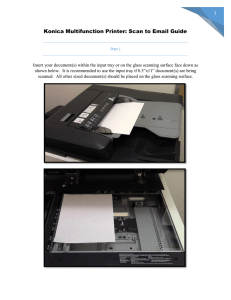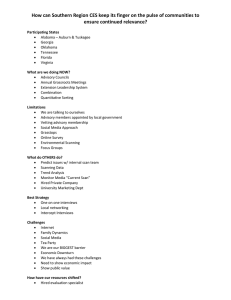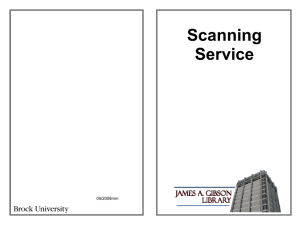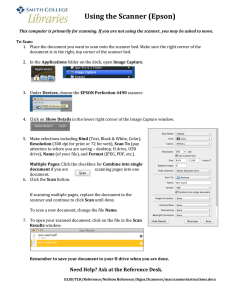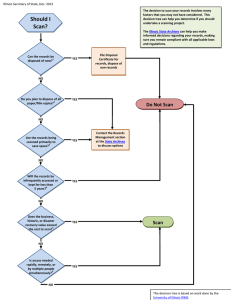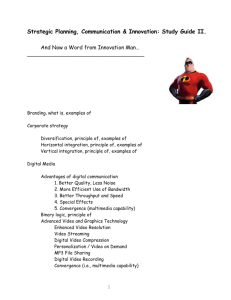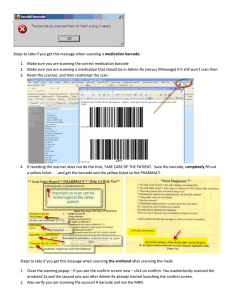Withitness strategies Scanning When working with small groups or
advertisement
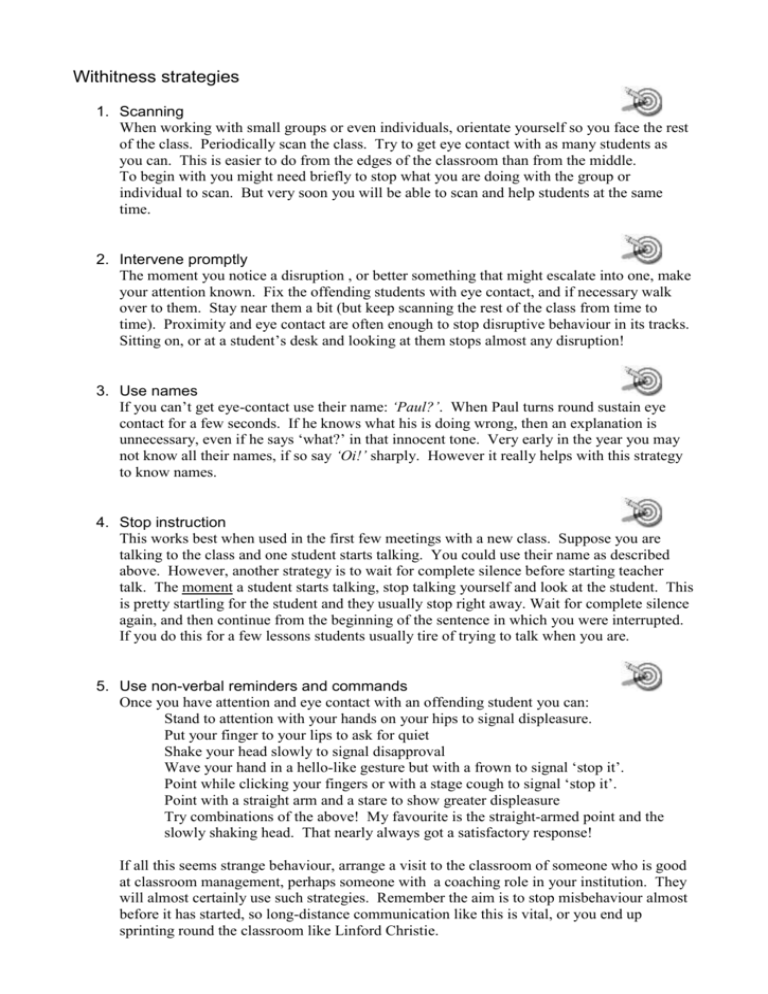
Withitness strategies 1. Scanning When working with small groups or even individuals, orientate yourself so you face the rest of the class. Periodically scan the class. Try to get eye contact with as many students as you can. This is easier to do from the edges of the classroom than from the middle. To begin with you might need briefly to stop what you are doing with the group or individual to scan. But very soon you will be able to scan and help students at the same time. 2. Intervene promptly The moment you notice a disruption , or better something that might escalate into one, make your attention known. Fix the offending students with eye contact, and if necessary walk over to them. Stay near them a bit (but keep scanning the rest of the class from time to time). Proximity and eye contact are often enough to stop disruptive behaviour in its tracks. Sitting on, or at a student’s desk and looking at them stops almost any disruption! 3. Use names If you can’t get eye-contact use their name: ‘Paul?’. When Paul turns round sustain eye contact for a few seconds. If he knows what his is doing wrong, then an explanation is unnecessary, even if he says ‘what?’ in that innocent tone. Very early in the year you may not know all their names, if so say ‘Oi!’ sharply. However it really helps with this strategy to know names. 4. Stop instruction This works best when used in the first few meetings with a new class. Suppose you are talking to the class and one student starts talking. You could use their name as described above. However, another strategy is to wait for complete silence before starting teacher talk. The moment a student starts talking, stop talking yourself and look at the student. This is pretty startling for the student and they usually stop right away. Wait for complete silence again, and then continue from the beginning of the sentence in which you were interrupted. If you do this for a few lessons students usually tire of trying to talk when you are. 5. Use non-verbal reminders and commands Once you have attention and eye contact with an offending student you can: Stand to attention with your hands on your hips to signal displeasure. Put your finger to your lips to ask for quiet Shake your head slowly to signal disapproval Wave your hand in a hello-like gesture but with a frown to signal ‘stop it’. Point while clicking your fingers or with a stage cough to signal ‘stop it’. Point with a straight arm and a stare to show greater displeasure Try combinations of the above! My favourite is the straight-armed point and the slowly shaking head. That nearly always got a satisfactory response! If all this seems strange behaviour, arrange a visit to the classroom of someone who is good at classroom management, perhaps someone with a coaching role in your institution. They will almost certainly use such strategies. Remember the aim is to stop misbehaviour almost before it has started, so long-distance communication like this is vital, or you end up sprinting round the classroom like Linford Christie. 6. Avoidance Consider the activities that can potentially lead to disruptions in your classes, for example: Students collecting materials from the back of the room A transition from group discussion to teacher talk (students tend to continue talking) The former may be avoided by arranging to have the materials given out. Alternatively the disruptions may be reduced if you stand by the equipment, or if you let only one student per group collect them etc. It may not be possible to avoid the transition from group discussion to teacher talk, however a little thought might lead to a better way of managing it. E.g. trying: ‘You have one minute to finish your conversations, then I want complete quiet’ 7. Reminders and warnings Before a potentially disruptive activity remind students of the relevant rules. “Remember, while I’m explaining listen, no talking, and hands up for questions.” Setting goals before teacher talk really encourages students to listen as explained in chapter 16 and on page 7. 8. Walk around Walk round the whole classroom, using plenty of eye contact, and verbal interaction with students. Keep to the edges rather than the middle of the room as explained under scanning above.
